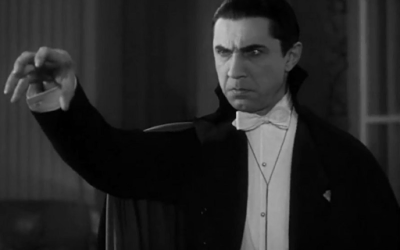Source: Mubi
Christmas time is here again, and for many people who celebrate the holiday, it’s tradition for families to gather together and watch one of their favorite Christmas movies. Some of these films have been long-time favorites, like “It’s a Wonderful Life” and “Miracle on 34th Street”, while others are more recent, like “The Grinch” and “Elf”. Still, while many of these films are more than worthy of their Christmas classic status, there are plenty more films that are equally deserving, and many of them even come from outside the United States (Christmas isn’t just an American holiday after all). Foreign Christmas films sadly do not get the attention they deserve, so it’s only fitting that we take this time to acknowledge a handful of these films. So without further ado, here are some of our favorite Christmas films that have come from various nations around the world.
Three Wishes for Cinderella (1973) – a coproduction between Czechoslovakia and Germany, this has become a Christmas staple for many Eastern European nations, and it’s not hard to see its appeal. As the title suggests, this is an adaptation of one of the world’s most famous fairy tales modified to fit the conventions of the holiday season. It certainly strays from the original story in a number of ways – perhaps most significantly, three hazelnuts that can be used to grant wishes are used in place of the traditional fairy godmother figure – but that doesn’t mean it’s unable to capture the spirit of the original story. At the end of the day, those who view the film will still root for its underdog heroine and look down upon the wicked stepmother who oppresses her. Throw in a little holiday magic, and the result is a unique take on the classic story.
Fanny and Alexander (1982) – considering that his filmography contains the likes of “The Seventh Seal” and “Wild Strawberries”, this Swedish film might not be considered the height of director Ingmar Bergman’s career, but that doesn’t make it any less admirable. Originally created as a five-hour miniseries, this film was later condensed to just over three hours, though its depiction of two children and the effects of their mother’s remarriage does not suffer from this reduction of the running time. Taking some inspiration from his own life, Bergman tells this Christmas-set narrative and turns it into a dramatic, but authentic look at abuse and the hypocrisy of those who claim to be religious. This was the last production Bergan ever directed, and thankfully, he’s able to end things on a high note.
Vacanze di Natale (1983) – the English translation of this Italian Christmas comedy is “Christmas Vacation”, but there’s otherwise no connection between this film and the 1989 National Lampoon film of the same name (in large part due to coming out six years prior). In reality, the films depicts a conflict between two families of greatly contrasting class; one hails from Milan and a more affluent background, the other calls Rome its home and is much less well-off and much more vulgar. Their meeting at a ski resort in the mountain town of Cortina d’Ampezzo is quick to lead to variety of absurd and hilarious scenarios, but while there is no shortage of hilarious jokes, the situation does allow the two families to eventually come to an understanding, leading to an ending that is every bit as heartwarming as one might expect from a holiday film.
Tokyo Godfathers (2003) – the holiday season is usually seen as a time for family to come together, but in many cases, what one considers “family” isn’t what most would expect. This is best demonstrated in this animated feature from Japanese director Satoshi Kon, in which three homeless people – an alcoholic, a trans woman, and a teenage runaway – finding an abandoned baby and attempting to return it to its parents. As one can imagine, this group is as far from the image of the ideal family model as one can get, but as their efforts to care for this baby show, that doesn’t make them any less caring. Christmas is not something commonly emphasized in Japanese cinema, so it’s interesting to see how the holiday is depicted in a culture that doesn’t cherish it the same way other nations do, and the final film pulls it off quite well.
Joyeux Noël (2005) – there aren’t many Christmas films that take direct inspiration from real-world events, but this French film (which earned an Academy Award nomination for what is now called Best International Feature) does just that. Based on the Christmas truce of 1914, the film follows French, German, and Scottish soldiers fighting amongst each other during World War I. A ceasefire is called on Christmas Eve, and all sides come together to celebrate the holiday. The film is a testament to the best of humanity during the worst of times, and seeing these men struggle to fight the very people they had bonded with just the other night never fails to pull at the heartstrings. It may not be entirely accurate to history, but it does capture the raw emotion that such an event must have invoked.
Tuesday, After Christmas (2010) – selected as one of the Un Certain Regard films of the 2010 Cannes Film Festival, this modern Christmas story comes from the nation of Romania and follows Paul, a family man trapped between his love for his wife Adriana and the affair he is having with Raluca, his daughter’s orthodontist. Paul struggles in deciding which woman means more to him, and as the Christmas season draws closer, it becomes increasingly difficult to act as if there is nothing wrong going on. Given that most Christmas films tend to lean to the wholesome side when it comes to depictions of family, this is far from what most people would want to see during this time of year, but it’s perhaps this painful acknowledgement of reality that makes it a unique, if not necessary, viewing during the Christmas season.




